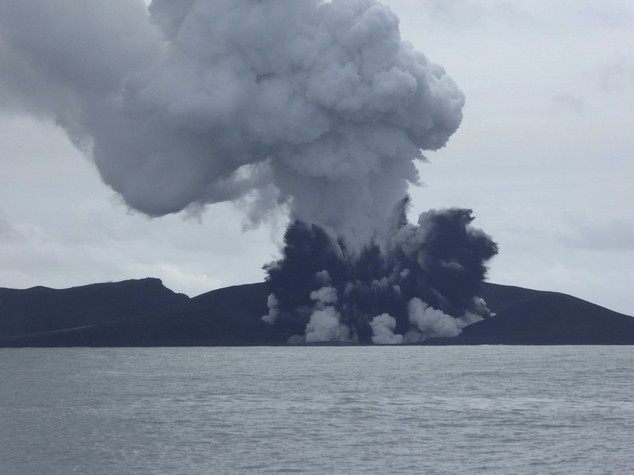Proponents of anthropogenic climate change may be struggling to deliver conclusive evidence that human activity is causing catastrophic global warming, but one thing they have no problem with producing is ever more elaborate flights of imaginative fancy. The latest bonkers offering is the assertion by Time author Jeffrey Kluger that climate change will cause more volcanos.
“Give climate change credit for one thing: it’s endlessly versatile,” Kluger writes breathlessly in his article How Climate Change Leads to Volcanoes (Really). “There was a time we called it global warming, which meant what it said: the globe would get warmer. It was only later that we appreciated that a planet running a fever is just like a person running a fever, which is to say it has a whole lot of other symptoms: in this case, droughts, floods, wildfires, habitat disruption, sea level rise, species loss, crop death and more.
“Now, you can add yet another problem to the climate change hit list: volcanoes. That’s the word from a new study conducted in Iceland and accepted for publication in Geophysical Research Letters. The finding is bad news not just for one comparatively remote part of the world, but for everywhere.”
Unfortunately for Kluger, not even the authors of the report he cites are claiming that glacier melt in Iceland will cause more volcanoes everywhere. Rather, the authors of the report merely observe that, as warming occurs Iceland’s glaciers are melting at an increased rate, causing the ground beneath them to rise at an accelerated rate (due to the weight of the glaciers being removed).
A casual remark by one of the papers authors, Richard Bennett, reported by the University of Arizona was the first mention of a possible link to volcanic activity. talking to UANews, Bennett commented that there is evidence to suggest that the last time Iceland underwent a deglaciation event, roughly 30,000 years ago, volcanic activity increased 30-fold.
Bennett later told Kluger that “high heat content at lower pressure creates an environment prone to melting these rising mantle rocks, which provides magma to the volcanic systems.”
One of his co-authors, Kathleen Compton, also of the University of Arizona emailed to Kluger to say “As the glaciers melt, the pressure on the underlying rocks decreases. Rocks at very high temperatures may stay in their solid phase if the pressure is high enough. As you reduce the pressure, you effectively lower the melting temperature.”
However, Anthony Watts, writing at Watts Up With That, points out that correlation does not prove causation. “Iceland has had melting glaciers,” he said. “OK we’ll accept that, but Iceland is not the world, and a good number of volcanoes that have erupted in the last century are in the tropical parts of the world where there are no glaciers on the volcanoes or magma fields, yet somehow, this writer, Jeffrey Kluger, extrapolates Iceland’s glacier melt to volcano link up to the entire world.
“But, there’s a hitch. According to NOAA data, volcanic activity worldwide actually went DOWN in the 2000’s while the climate changing carbon dioxide went UP in global concentration.”
Watts points out that a far more likely contender for the cause of the glacier melt is the Atlantic Multi-Decadal Oscillation. Iceland is located in the north Atlantic, which has been experiencing a warm phase since about 1980.
“Gee, do you think maybe, possibly, that Iceland might have more glacier melt when the AMO is warmer?” Watts asks “The authors don’t seem to be cognizant of it, preferring instead to cite the universal bogeyman “climate change”.
His conclusion? “The stupid, it burns like a magnesium flare.”

COMMENTS
Please let us know if you're having issues with commenting.